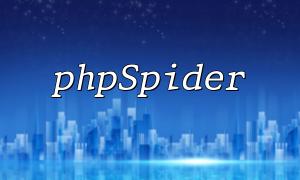In PHP development, exception errors (Exceptions) are common issues. Properly handling exceptions not only prevents program crashes but also ensures code runs stably and securely. Exceptions represent unexpected events in the program, usually containing error messages, error codes, and exception types. Using exception handling mechanisms, we can catch and manage these errors to create more robust applications.
PHP provides the try-catch-finally structure to manage exceptions. Code that may trigger exceptions is placed in the try block, exception handling code is in the catch block, and the finally block always executes regardless of whether an exception occurred—typically used for resource cleanup.
try {
// Code that may throw an exception
$result = 1 / 0;
} catch (Exception $e) {
// Catch and handle the exception
echo "Caught exception: " . $e->getMessage();
} finally {
// Always execute this block
echo "Finally block";
}
In the example above, dividing by zero triggers an exception; the catch block captures and outputs the exception message, and the finally block ensures certain code always runs.
Besides PHP’s built-in Exception class, you can define your own exception classes to provide more detailed error information and customized handling. Custom exception classes extend Exception and can include additional properties and methods.
class CustomException extends Exception {
public function __construct($message, $code = 0, Throwable $previous = null) {
parent::__construct($message, $code, $previous);
}
public function __toString() {
return __CLASS__ . ": [{$this->code}]: {$this->message}\n";
}
public function customFunction() {
echo "Custom function for handling exception";
}
}
try {
throw new CustomException("This is a custom exception");
} catch (CustomException $e) {
echo $e;
$e->customFunction();
} catch (Exception $e) {
echo "Caught exception: " . $e->getMessage();
} finally {
echo "Finally block";
}
The example defines a CustomException class. When caught, it allows calling custom methods, making exception handling and debugging easier.
In development, it is common to catch an exception within a function, handle part of it, then rethrow it to a higher-level caller for centralized handling.
function foo() {
try {
// Code that may throw an exception
throw new Exception("Exception in foo function");
} catch (Exception $e) {
echo "Caught exception: " . $e->getMessage();
// Rethrow the exception to the caller
throw $e;
}
}
try {
foo();
} catch (Exception $e) {
echo "Caught exception in catch block: " . $e->getMessage();
}
The function foo catches and partially handles the exception, then throws it up to the caller, where it is caught and handled again.
Exception handling is a vital skill in PHP programming to ensure stable application behavior. Understanding try-catch-finally, custom exception classes, and exception throwing and propagation techniques helps developers write robust and maintainable code. We hope the PHP exception handling tips presented here assist you in your development projects.





